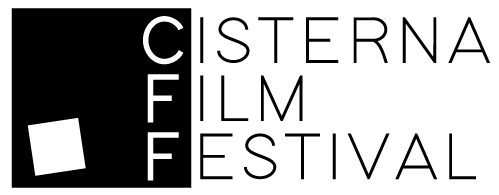The Cisterna Film Festival has come to its third edition and finally the new poster image of this year is unveiled. In line with the habit of entrusting the representative image to a local artist, we ended up choosing Mr. Alessandro Comandini. Hereafter what he told us about his training and his relationship with cinema, but especially about this very special shot, with its long and full-of-life story.
Can you tell us about your shot?
This photo was born from a finding: last summer I was empting a storehouse and in an old suitcase (I know, it looks like a movie…) I found some boxes with slides. I opened them full of curiosity but unfortunately, they were irretrievably ruined, no longer legible, completely corroded by humidity, temperature fluctuations and time. They were my father’s slides probably used for a scientific conference about breast cancer. Watching them carefully one by one, I noticed that some of them had no more images of sickness and bruised bodies, survival data or surgical techniques but they had become something else, they had turned into vibrant colours and shapes. They had change their own meaning and now, thirty years later, they no longer tell of pain, but beauty and life. It was not enough for me, so to complete the rebirth I superimposed those slides to most recent pictures on black and white film. The photo selected for the Cisterna Film Festival poster is one of those reborn images.
Who is the portrait subject?
No matter who is that person. Now this photograph is a poster and I like to think that figure, immersed in colours, can live its own life as an image and not as a portrait of a specific person.
How did you start photographing and what are your favourite subjects?
I started early in the middle school, when I attended a darkroom course, and since then I have never stopped photographing and printing my photographs. I remember that I took my first pictures in my dad’s medical office and the negatives were developed by Pietro Rolletti, my master. Black and white then was an almost compulsory choice, but even after the advent of digital (which I also appreciate and use), I continued to see and shoot in black and white. I consider it as a universal and “physiological” language and not just a technical or stylistic choice. Among my favourite genres, there is definitely the portrait, but finding subjects to immortalize, especially at the beginning, was not easy, so I started exploring the self-portrait world that I have no longer abandoned. A fascinating theme, far from selfies, and perhaps it is not known to everyone that in Senigallia, there is a museum (the MUSINF) with a section dedicated to the photographic self-portrait (where I have two photographs of mine). Linked to the theme of self-portrait, I feel very close to my personal research the theme of self-conscious identity and representation. This is a particularly important theme, in the social era, and I have been working for a few years on it. “Be a Muse”, the exhibition realized with the association “Il Ponte”, is part of this project.
What about your relationship with the cinema? Which are the directors you love most?
I confess right away: I am not a cinema fanatic but I can say I love good cinema. In the filmmaking sector, as in photography, I prefer a certain formal rigor and I appreciate the good “photography”.
As far as I am concerned, a film could be shot in full with a fixed camera. Among my favourite directors are Antonioni and Scola. Maybe you do not need to add that I do not love special effects…
I like to see movies at cinema and the use of images (not only in films, but also in photographs) showed on small devices such as mobile phones or tablets is an incredible regression. We went from cinemascope to a few-inches screen, from a time when 10x15 photos were considered proof, to the scaled, filtered and compressed photos on Instagram. We are less and less demanding, but above all these ways of fruition of images move away from a sharing (social) experience. A movie theatre, an exhibition are forms of interactive and live fruition, offer opportunities for discussion, exchange of views, imposing space sharing and the right observation distance. Watching a movie with headphones, or scrolling through the pictures on a mobile phone screen is not the same.
How, in your opinion, are the cinematic and photography related?
Although the cinema is, technically, a quick succession of frames that create an idea of movement, I believe that cinema and photography represent two interconnected but also very different expressive codes.
The factor of time is probably the key to delineating a distinction between these two arts: a director has the ability to tell a story – and capture the spectator’s attention – having a generally longer length of time than the one enclosed in a photograph – in which time is limited to a fraction of a second at the shooting time -. In addition, the viewer of a film is willing to sit and follow the story, while the fruition of photographic images is, above all, extremely superficial and fast. The cinema uses a more complex language, made of images, but also music, dialogues, special effects, narrative gimmicks that are able to move the story in time (flashback) and space (scene changes). Photography has not this possibility; it has to tell a story in one image (or in a sequence of images, in the case of an exhibition or a photographic book). Photography is inevitably tied to eyesight and the construction of the image must provide the right interpretation to the viewer. However, this rigor, this essentiality, is not said to tell the truth. Exactly like cinema.

